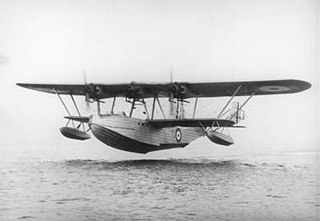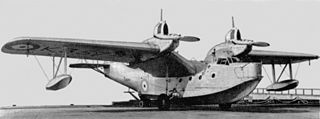 W
WThe Blackburn Perth was a British flying boat in service during the interwar period. It was essentially an upgraded Iris, hence the largest flying-boat to serve with the Royal Air Force at the time.
 W
WThe Blackburn R.B.2 Sydney was a long-range maritime patrol flying boat developed for the Royal Air Force in 1930, in response to Air Ministry Specification R.5/27. It was a parasol-winged braced monoplane of typical flying boat arrangement with triple tailfins and its three engines arranged on the wing's leading edge. After evaluation, it was not ordered into production and no further examples were built.
 W
WThe Saunders Severn was a three-engined biplane flying boat intended for maritime patrol duties. It performed well but was fragile and unreliable. Only one was built.
 W
WThe Short R.24/31 was a British twin-engined, high-wing cantilever gull winged monoplane flying-boat designed and built by Short to Air Ministry specification R.24/31 for a "General Purpose Open Sea Patrol Flying Boat". The contract also specified the use of the experimental Rolls-Royce Goshawk engine. The Saunders-Roe London and the Supermarine Stranraer competed successfully for this contract.
 W
WThe Short S.8/8 Rangoon was a 1930s British three-engined biplane flying boat, designed and built by Short Brothers for the Royal Air Force.
 W
WThe Short Singapore was a British multi-engined biplane flying boat built after the First World War. The design was developed into two four-engined versions: the prototype Singapore II and production Singapore III. The latter became the Royal Air Force's main long-range maritime patrol flying boat of the 1930s and saw service against the Japanese with the Royal New Zealand Air Force during the Second World War.
 W
WThe Short S.25 Sunderland was a British flying boat patrol bomber, developed and constructed by Short Brothers for the Royal Air Force (RAF). The aircraft took its service name from the town and port of Sunderland in North East England.
 W
WThe Vickers Warwick was a multi-purpose twin-engined British aircraft developed and operated during the Second World War. In line with the naming convention followed by other RAF heavy bombers of the era, it was named after a British city or town, in this case Warwick. The Warwick was the largest British twin-engined aircraft to see use during the Second World War.